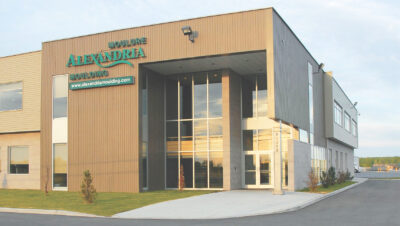In advance of the 2023 Holiday season and into New Year’s, sawmills sawed more lumber ahead of this period.
Many secondary manufacturers took extended breaks during this time in most areas on both sides of the border.
This resulted in lower demand for raw materials. In certain areas, obtaining logs and pricing were a challenge thus impacting output. As we move into a new year, facing uncertainty, volatility and complexities will be top of mind, as will be employee retention and recruitment for the hardwood industry.
Ash production was down in certain areas and green lumber had seen a contraction over the Holidays. Markets are reported to be absorbing developing supplies. Kiln-dried stocks are controlled, however, domestic and international customers are being adequately supplied. Most are purchasing for immediate needs.
Supplies of Hard Maple were ample for most secondary manufacturers and wholesalers. Suppliers are struggling to find new orders, and hope that end users’ inventories will decline sufficiently to provide a boost in activity.
Even though markets are slow, it was reported that prices for some grades and thicknesses were rising, such as for kiln-dried No. 1 and 2 White FAS and for Unselected 4/4 through 5/4 FAS. Green Hard Maple output was low compared to the steady demand.
Reports are similar for Soft Maple. Some sawmills are having difficulty finding enough logs or are controlling receipts, thus output is low and prices are rising. Depending on areas contacted, kiln-dried sales are not strong, with inventories low for many grades and thicknesses.
Aspen markets remain the same with demand slow because of low finished goods sales. Some sawmills are challenged to find outlets for production, and prices are dropping. Kiln-dried business is also reported as weak, with rising inventories resulting in competition for orders.
The same for Basswood with demand being weak, although business is better for green lumber than kiln-dried sales. Contacts noted kiln-dried inventories are higher for most grades and thicknesses, while green production is limited.
Business for Birch has declined where it was being used as a substitute for Maple. Traditional markets for Birch have held up well even though there has been a drop in hardwood finished goods orders. Supplies are noted as outpacing demand.
Some sawmills report low log decks. Green Red Oak production in some areas is limited because of this. Supplies of No. 1 Common and Better are identified as marginally sufficient to meet demand. Buyers are controlling receipts of kiln-dried inventories.
White Oak sawmill production is also down for certain areas contacted, so green White Oak lumber supplies are limited. Demand is outpacing supply of No. 1 Common and Better grade. Sales of kiln-dried stocks are reported as solid with thin inventories.
In mid-December the Bank of Canada (BoC) reported that interest rates would not be coming down any time soon, putting it on a divergent path from the U.S. Federal Reserve, which said that easing could be on the timetable.
Governor Tiff Macklem said the Fed would do what they needed to do, and the BoC would focus on what needed to be done in Canada.
“We have not started having that discussion (about cutting rates), because it’s too early to have that discussion. We’re still discussing whether we raised interest rates enough and how long they need to stay where they are.”
Money markets expect the bank to begin easing as soon as April and for rates to fall 125 basis points in 2024.
U.S. central bank chief Jerome Powell said the historic tightening of monetary policy is likely over, with a discussion of cuts in borrowing costs coming into view.
The Bank of Canada had previously forecast inflation should hit 2 percent by end-2025 but Macklem – making his last public appearance of 2023 – told reporters it should be closer to target by the end of next year.
“Inflation is still too high. If we don’t do enough … ultimately, we’re probably going to have to raise rates even further to get it down,” he said. Earlier, in his speech, he had said future inflation declines were likely to be gradual.
Macklem also expressed increasing optimism it could bring inflation back down to target but said the next few quarters would be difficult as high interest rates restrict the economy.
“The 2 percent inflation target is now in sight. And while we’re not there yet, the conditions increasingly appear to be in place to get us there,” he said.
Overseas, the European Central Bank said policy easing had not been brought up in a two-day meeting, and the Bank of England said rates would remain high for “an extended period”.
“I expect 2024 to be a year of transition … with the cost of living still increasing too quickly, and with growth subdued, the next two to three quarters will be difficult for many,” said Macklem, adding the jobless rate was likely to rise further.








